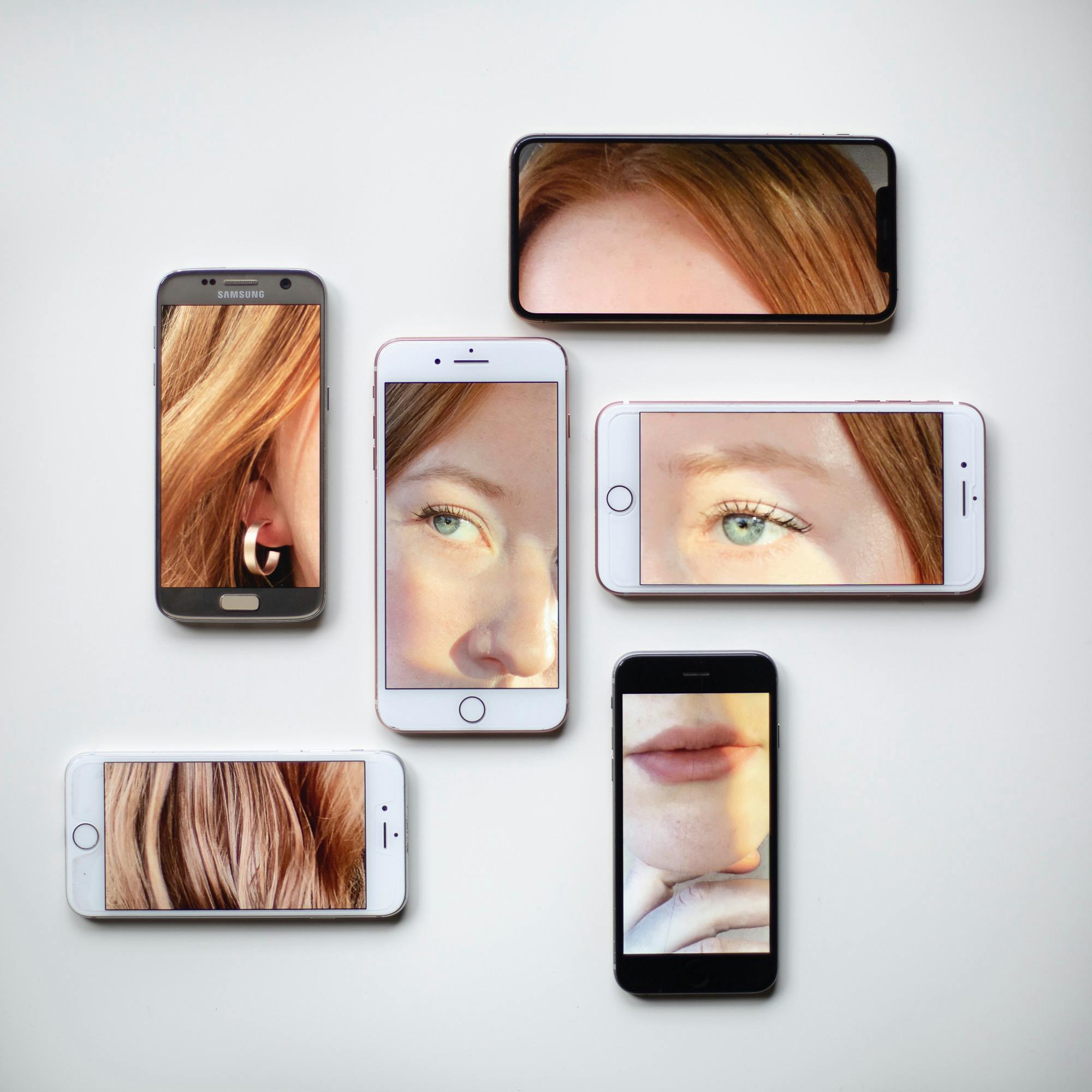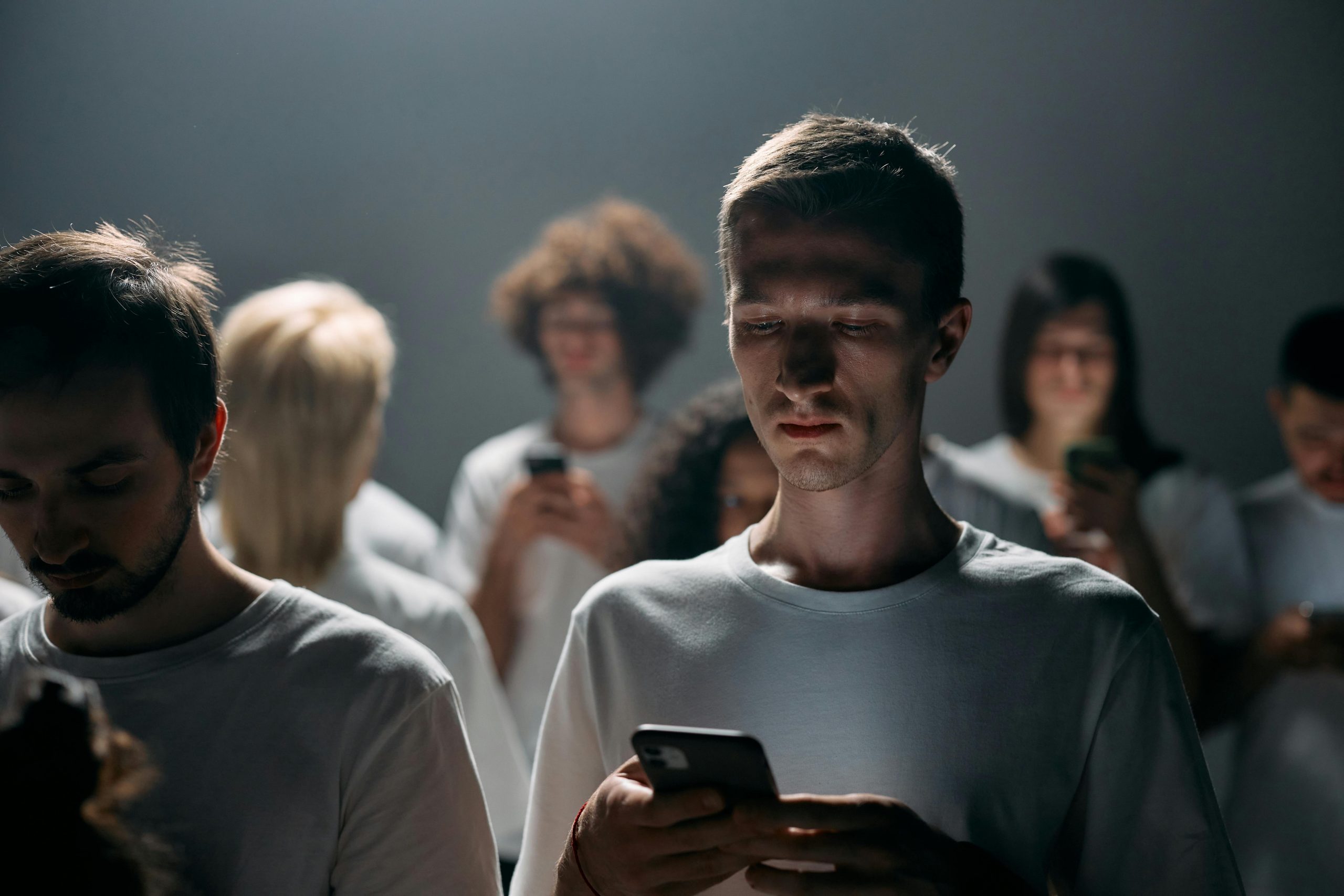How Your Phone Is Changing Your Brain (And Not in a Good Way)

Look around you in any restaurant, bus stop, park or public space, and you’ll see the same thing: people glued to their phones, scrolling through feeds that never end.
The average person now checks their phone 58 times a day—that’s once every 17 minutes we’re awake. And that adds up to more than 21,000 glances per year!
Here’s the thing: while we’re busy tapping away at our screens, we’re missing out on something our brains actually need—real human connection. Those face-to-face moments don’t just feel good; they flood our brains with mood-boosting chemicals that digital interactions simply can’t match.
Think about it. When was the last time a text message gave the same warm feelings as laughing with a friend in person? That’s not just in your head—it’s your brain telling you what it really needs. Plus, all that blue light before bed is wrecking your sleep, making you more anxious and less happy during the day.
Why Your Brain Craves Real People (Not Just Their Profiles)

When you meet with a friend, something amazing happens in your brain. Your body releases a flood of feel-good chemicals—oxytocin (the “bonding hormone”), dopamine (the “reward chemical”), and serotonin (the “mood stabilizer”). This cocktail of natural chemicals is your brain’s way of saying “this is what I need!”
Research from face-to-face interaction studies shows that in-person conversations trigger these chemicals in ways that texting or video calls simply can’t match. One study found that people who had regular face-to-face social contact were half as likely to experience depression compared to those who primarily connected online.
The simple act of making eye contact activates brain regions linked to empathy and understanding. When someone smiles at you in person, your brain’s mirror neurons fire up, helping you literally feel what they feel. Even a quick handshake or friendly touch on the arm reduces stress hormones and builds trust.
Think about the last truly satisfying conversation you had. Chances are it happened in person, not through a screen. That’s not just preference—it’s biology. Our brains evolved over thousands of years to read subtle facial expressions, body language, and vocal tones that often get lost in digital translation.
Your brain is literally wired for real connection. When you give it what it needs, you’ll feel the difference.
So, are you ready to make a change? Let’s look at five simple habits that work to help you put down your phone and pick up your life.
5 Phone-Taming Habits That Create Space for Real Connection
Habit 1: Create Phone-Free Zones in Your Home

Your environment shapes your behavior more than willpower ever will. Pick one or two spaces in your home where phones simply don’t belong. The dinner table is an obvious starting point, but also consider your bedroom.
When I made my bedroom a phone-free zone, my sleep improved within days. I bought an actual alarm clock (remember those?), and started keeping my phone in the kitchen overnight. Not only did I sleep better, but my mornings became more peaceful too. Instead of immediately diving into emails and social media, I had time to think, stretch, or just enjoy my coffee.
The science here is clear: blue light from screens blocks melatonin, the hormone that helps you sleep. Plus, keeping phones out of certain spaces creates natural opportunities for better conversation with the people you care about most.
Habit 2: Use the 20-20-20 Rule for Digital Breaks
For every 20 minutes you spend looking at a screen, take 20 seconds to look at something 20 meters away. Better yet, upgrade this rule by making one of your breaks a 20-minute face-to-face chat with someone nearby.
This eye-saving technique helps prevent digital eye strain, but it does something even more important—it builds in natural stopping points. Each pause is a chance to ask: “Do I really need to keep scrolling, or could I connect with someone real instead?”
I started using this when I work, and now whenever I take my 20-second break, I often end up having a quick chat with a colleague. These small interactions have improved my work relationships and actually made me more productive, not less.
Habit 3: Turn Notifications into Invitations
Most phone notifications are designed to pull you back into your screen. Flip the script by using them as reminders to connect face-to-face instead.
Try this: When you get a social media notification, use it as a cue to reach out to someone in real life. Got a Facebook birthday reminder? Skip the wall post and send a text to schedule coffee instead. Instagram like? Take a minute to think about which friend you haven’t seen lately and send them a quick “let’s catch up” message.
This simple habit retrains your brain to associate notifications with real-world social opportunities rather than digital rabbit holes. One study showed that people who replaced 30 minutes of social media time with in-person socializing reported a 10% increase in life satisfaction after just two weeks.
Habit 4: Practice “Tech Sunsets” an Hour Before Bed
An hour before sleep, put your phone to bed first. Place it in its charging spot and say goodnight. Use this hour for quality time with family, reading a book, or having a real conversation with your partner.
The benefits go beyond better sleep (though that’s huge). This habit creates a natural space for deeper connection at a time when many of us are too tired to be intentional. Some of my best conversations with my partner happen during this tech-free wind-down time.
Researchers at Harvard found that using screens before bed not only disrupts sleep patterns but also creates a stress response in the body. By contrast, calm face-to-face interaction in the evening helps your nervous system shift into a more relaxed state, preparing your body and mind for restful sleep.
Habit 5: Take a Weekly Digital Break
Choose one day (or even half-day) each week to go completely phone-free. Use this time to meet up with friends, visit family, or join community activities where you can connect with others.
The first time I tried this, I was shocked by how many times I reached for my phantom phone (or thought I felt it buzz in my pocket). But by the third week, something shifted. I found myself more present, more engaged, and genuinely happier during these phone-free periods. Now Sunday afternoons are sacred—no screens, just real life.
Studies show that even brief periods of complete disconnection from technology can reset your attention span and reduce anxiety. Plus, when people know you’ll be offline at certain times, they’re more likely to make plans to see you in person—creating even more opportunities for meaningful connection.
From Day One to Done Deal: How to Make These Habits Last

Let’s be honest—changing any habit isn’t easy, especially when it comes to our phones. These devices are designed to keep us hooked, but with a few smart strategies, you can make your new habits stick.
Start with just one habit at a time rather than trying to transform overnight. Your brain forms stronger connections when you focus on a single change before adding another. Try the phone-free bedroom for a week before adding the next habit.
Use visual reminders like sticky notes on your phone or a special charger that lives in your “phone home” area. These physical cues help bridge the gap between intention and action, especially during the first 21 days when your new habits are most fragile.
Find an accountability partner who shares your goal of more face-to-face connection. Meeting up regularly not only keeps you on track but also gives you the in-person interaction your brain craves. Plus, research shows we’re 65% more likely to reach a goal when we commit to someone else.
Remember: small wins build momentum. Celebrate each day you successfully practice your new habit—your brain loves those little victories.
The Real-World Rewards of Looking Up
Ready to try a more connected life? Start with just one habit this week—maybe the tech-free bedroom—and feel the difference. Your brain (and friends) will thank you.

Remember, we’re all wired for real connection. At LifeBonder, we’re building tools that help you meet like-minded people for authentic, face-to-face friendships.
Download our app today and turn phone time into face time with people who share your interests. Your better-connected life is waiting.
- Sources:
- https://explodingtopics.com/blog/smartphone-usage-stats
- https://www.sleepfoundation.org/bedroom-environment/blue-light
- https://www.ijhssi.org/papers/vol12%286%29/1206200204.pdf
- https://www.psychologytoday.com/us/blog/lifetime-connections/202203/the-chemistry-the-best-friendships
- https://hms.harvard.edu/news/screen-time-brain
- https://www.health.harvard.edu/staying-healthy/bedtime-screen-time-may-reduce-sleep-quality
- https://www.psychologytoday.com/us/blog/insight-therapy/202305/face-to-face-communication-healthier-than-digital
- https://www.apa.org/news/podcasts/speaking-of-psychology/attention-spans
- https://www.frontiersin.org/journals/public-health/articles/10.3389/fpubh.2024.1387637/full
- https://link.springer.com/article/10.1007/s11469-023-01118-7
- https://www.afcpe.org/news-and-publications/the-standard/2018-3/the-power-of-accountability/
For more insights on breaking free from screen addiction, check out our post on Medium: From Screen Time to Real Time – A Wake-Up Call.



